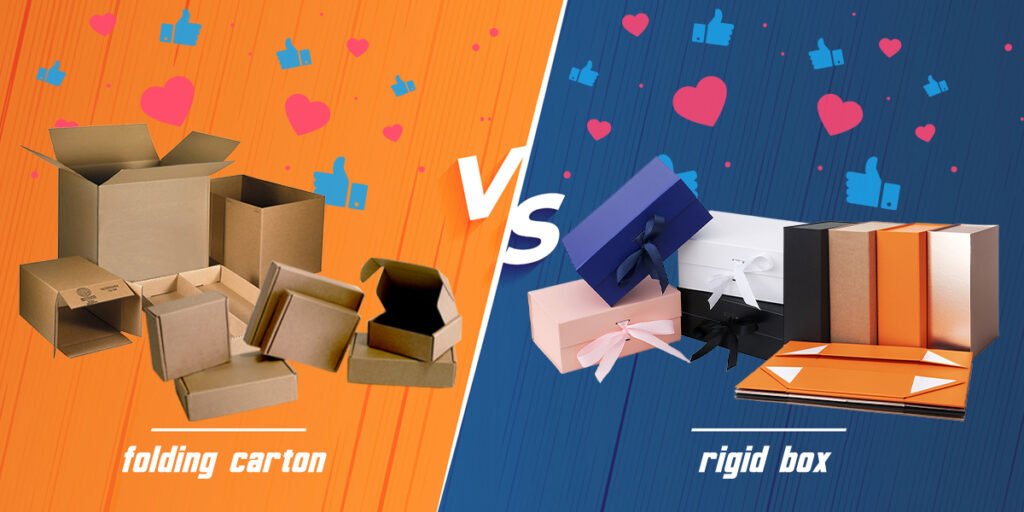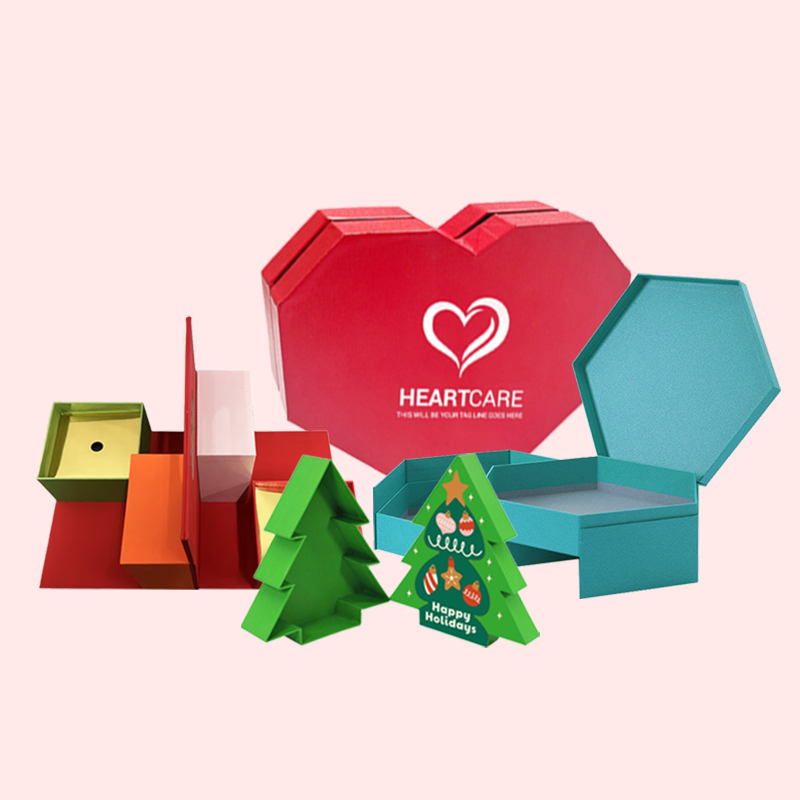Are you feeling lost about where to start with your packaging project? The first step can be very confusing. This confusion can lead to delays and cost more money.
The very first step is to clearly define your packaging requirements. This includes specifying the box style, dimensions, material, printing needs, and quantity. Having these details ready simplifies the entire process.
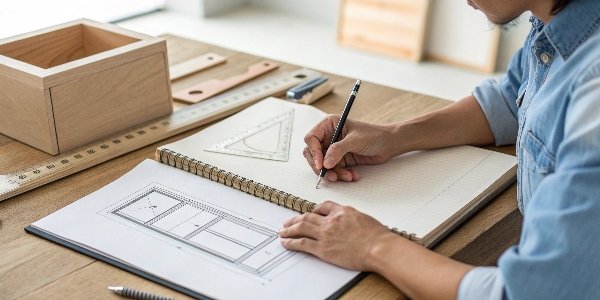
Getting that first step right is so important. It builds the foundation for a smooth project. Over my 16 years in this industry, I have seen many projects get stuck right at the start. This usually happens because the needs were not clear. It is about more than just making a box. It is about making your product look great and sell well. Let's look closer at the world of paper packaging. This will help you make the best choices for your brand.
What are the different types of paper packaging boxes?
Are you overwhelmed by all the different box options available? Choosing the wrong type can damage your product or harm your brand's image. Let's make the choices simpler.
Paper packaging boxes come in many forms, but the most common types are folding cartons, rigid boxes, and corrugated boxes. Each type serves a different purpose, from retail product display to shipping protection.
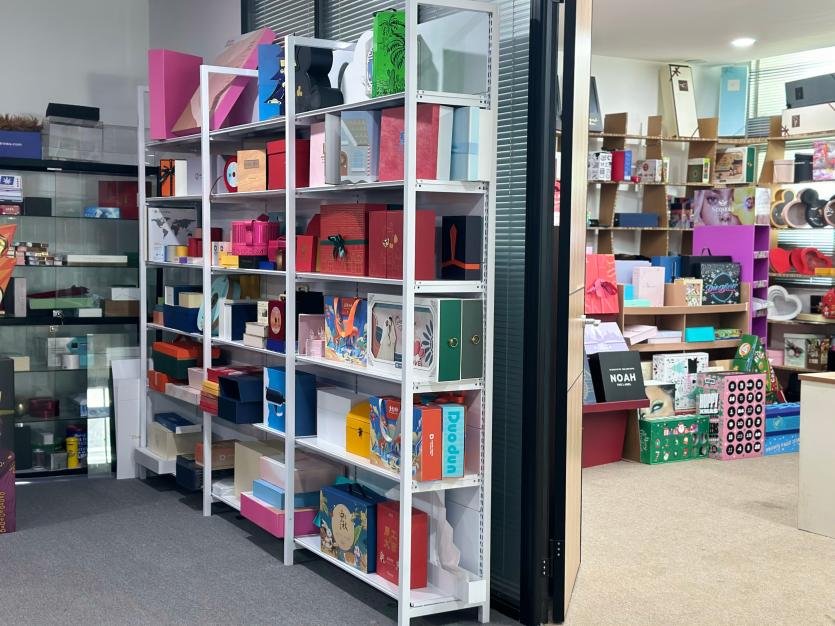
In my experience, understanding the main box categories is the first step to choosing correctly. It makes conversations with a supplier like my company, Giftspack, much more efficient. Let's break down the big three.
The Main Three Box Types
- Folding Cartons: These are what you see most often in retail stores. Think of a toothpaste box or a cereal box. They are made from a single layer of paperboard. We ship them flat to clients, which saves a lot of money on shipping and storage space. A client once came to us for a cosmetic product, and we helped them select the perfect paperboard thickness. This small choice made the box feel premium without a big increase in cost.
- Rigid Boxes: These are high-end boxes that do not collapse. The box your smartphone or a luxury watch comes in is a rigid box. They are made from thick chipboard and wrapped with printed paper. They feel heavy and strong, offering great protection and a premium unboxing experience.
- Corrugated Boxes: These are the workhorses of the packaging world, mainly used for shipping. They have a wavy layer of paper, called fluting, sandwiched between two flat linerboards. This structure makes them very strong.
Here is a simple table to compare them.
| Box Type | Primary Use | Key Feature | Material Example |
|---|---|---|---|
| Folding Carton | Retail Products | Ships flat, cost-effective | Paperboard, SBS |
| Rigid Box | Luxury Goods | Premium feel, durable | Chipboard, art paper wrap |
| Corrugated Box | Shipping & E-commerce | Strong, protective | Linerboard, fluting |
What are custom packaging boxes?
Does standard, off-the-shelf packaging fail to make your product stand out from the crowd? Generic boxes can make your brand feel cheap. There is a much better way.
Custom packaging boxes are containers designed and manufactured specifically for your product and brand. This includes custom sizes, shapes, materials, printing, and finishes, creating a unique unboxing experience for customers.
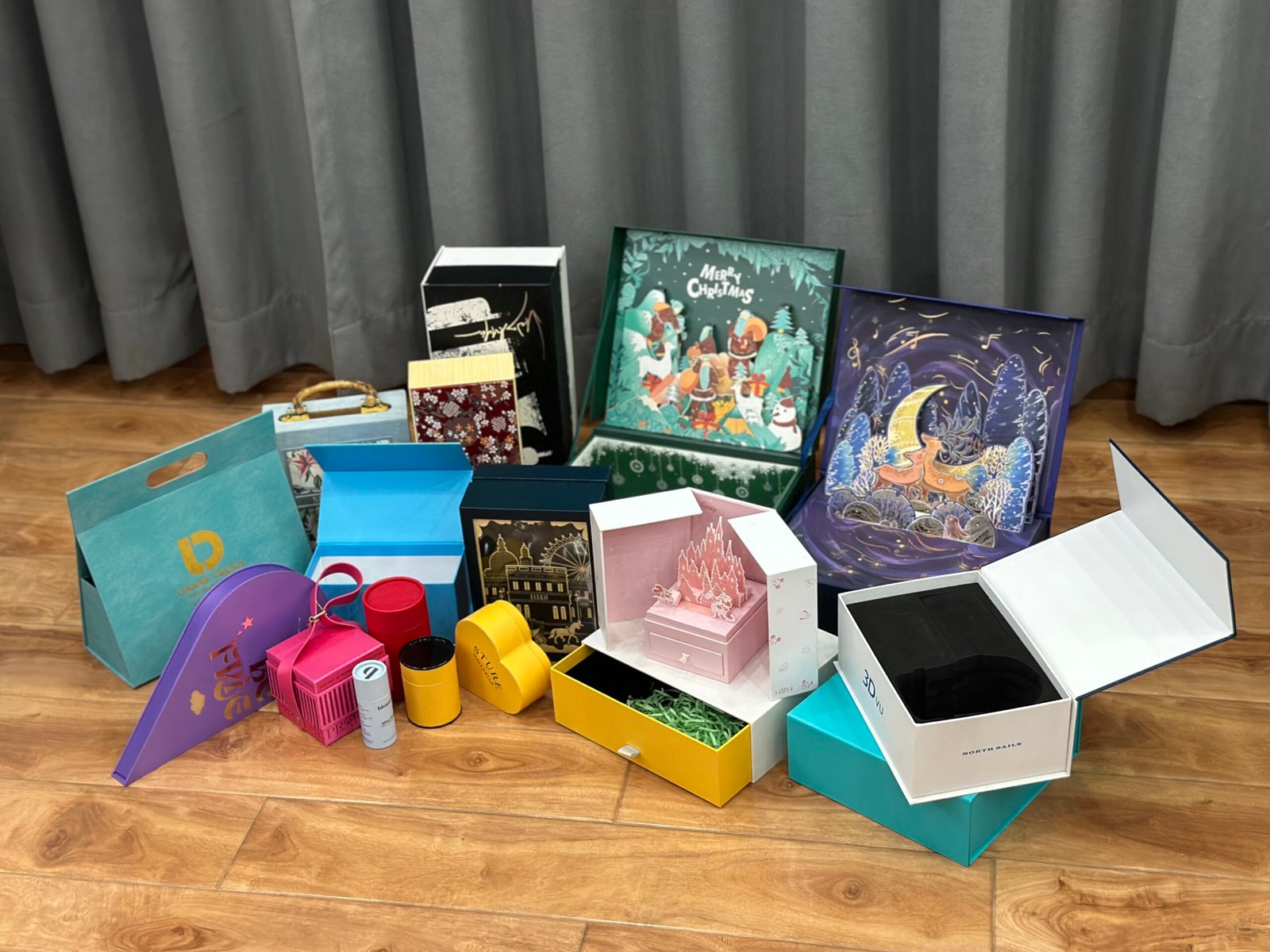
When I talk about "custom packaging1," I mean more than just printing a logo on a standard box. It is a complete solution tailored to your product. A few years ago, a client came to us with a problem. Their fragile glass bottles were breaking during shipment. We designed a custom box with a special paper insert that held each bottle securely. This simple change eliminated the breakage problem completely. That is the power of custom structural design2.
Key Areas of Customization
Customization brings your brand's unique story to life. It is not just about protection; it is about creating an emotional connection with your customer.
- Structural Design: We create a box that fits your product perfectly. This means the right size and shape, and often includes internal inserts or trays. A perfect fit looks professional and reduces the need for extra void fill like bubble wrap.
- Graphic Design: This is how your brand speaks from the shelf. It includes your logo, color choices (we can do CMYK or specific Pantone colors), and all the text and images. Good graphic design3 tells a story.
- Materials & Finishes: Choosing the right paper is crucial. But the finishes are what create that "wow" factor. We can add things like shiny foil stamping, raised embossing, or a sleek matte lamination. These details make the package feel special and luxurious.
What are the four main types of packaging?
Are you confused about terms like primary and secondary packaging4? Getting this wrong can create problems with shipping and sales. Let's look at an example to learn more.
The four main types of packaging are primary, secondary, tertiary, and ancillary. Primary packaging directly touches the product, secondary groups these products, tertiary is for shipping, and ancillary supports the process.
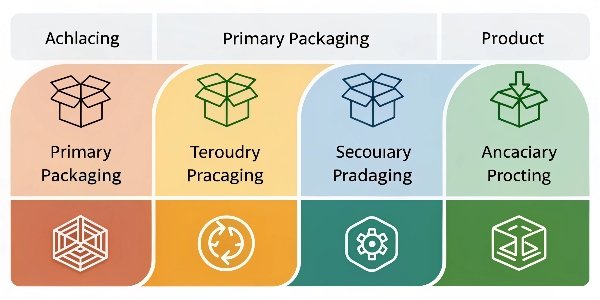
This might sound a bit academic, but understanding these levels is very practical. It helps everyone, from the designer to the logistics manager, speak the same language. I always use the example of a bottle of perfume to explain this to new team members.
The Four Levels Explained
Let's follow a single perfume bottle on its journey.
- Primary Packaging: This is the packaging that directly touches the product. In our example, it is the glass perfume bottle itself. Its main job is to hold and protect the liquid perfume.
- Secondary Packaging: This is the next layer out. For our perfume, this is the beautiful paper box you see on the store shelf. My team at Giftspack specializes in creating these boxes. This packaging is crucial for branding and making the product attractive to customers.
- Tertiary Packaging: This packaging is used for shipping and handling in bulk. Multiple perfume boxes would be packed into a larger corrugated cardboard box. This is the tertiary packaging5. Its purpose is purely functional: to get the products from the factory to the store safely.
- Ancillary Packaging: This refers to everything else used to support the packaging, like a price tag, an anti-theft security tag, or the plastic wrap used to secure a pallet of boxes.
This table makes it easy to remember.
| Packaging Type | Definition | Example (Perfume) | Main Purpose |
|---|---|---|---|
| Primary | Touches the product | The glass bottle | Containment, preservation |
| Secondary | Groups primary packages | The retail paper box | Branding, display, protection |
| Tertiary | Groups secondary packages | The shipping carton | Bulk transport, logistics |
| Ancillary | Supports other levels | Price tag, pallet wrap | Information, handling ease |
What is a paper box called?
Do you ever worry you're calling a box by the wrong name? Using incorrect terms can cause confusion with suppliers. This confusion can lead to wrong quotes and delays.
A paper box is often called a "carton." More specifically, a lightweight, single-layer box is a "folding carton6," while a heavier, non-collapsible box is a "rigid box7" or "setup box."
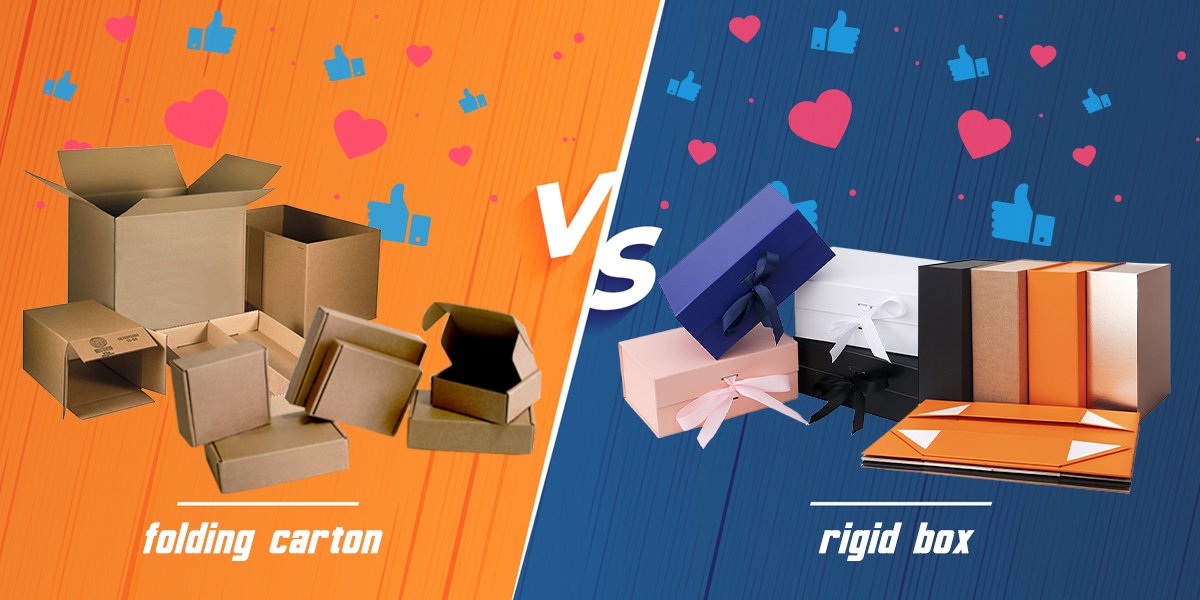
Learning the correct terms is important. It helps you communicate clearly with a packaging professional like me. While "paper box" is a fine general term, using the right industry language makes the whole process smoother and more professional. It shows you know your stuff.
Common Industry Names for Paper Boxes
Over my career, I've found that clear communication is the key to a successful project. Here are the terms we use every day.
- Carton: This is the most common and versatile term. However, it is important to be more specific. A "folding carton6" is very different from a "shipping carton."
- Folding Carton: This refers to a box made from a single sheet of paperboard that is cut and creased so it can be shipped flat and assembled later. Styles include "straight tuck end" or "reverse tuck end" boxes.
- Rigid Box: People also call this a "setup box." It's made from thick, rigid chipboard and is delivered already assembled. It does not fold down. Think of an iPhone box. The name "setup box" comes from the fact that it is already set up and ready to use.
- Corrugated Box / Case / Shipper: These three terms are often used for the same thing: a shipping box made with corrugated material. The word "case" is often used when talking about a specific quantity of products being shipped together.
A good supplier will understand what you mean even if you use general terms. But using the correct name ensures we are all on the same page from the very start.
Conclusion
In short, defining your needs first is key. Understanding box types, customization, and correct terms will ensure your packaging project is a success from the very beginning.
-
Explore how custom packaging can enhance your brand's identity and improve customer experience. ↩
-
Learn about the importance of structural design in creating effective and protective packaging solutions. ↩
-
Discover how graphic design can elevate your product's appeal and communicate your brand story. ↩
-
Learn how secondary packaging can improve product visibility and attract customers. ↩
-
Explore the functional aspects of tertiary packaging in logistics and bulk transport. ↩
-
Learn about the versatility of folding cartons in various packaging applications. ↩ ↩
-
Understand the benefits of using rigid boxes for premium product packaging. ↩

